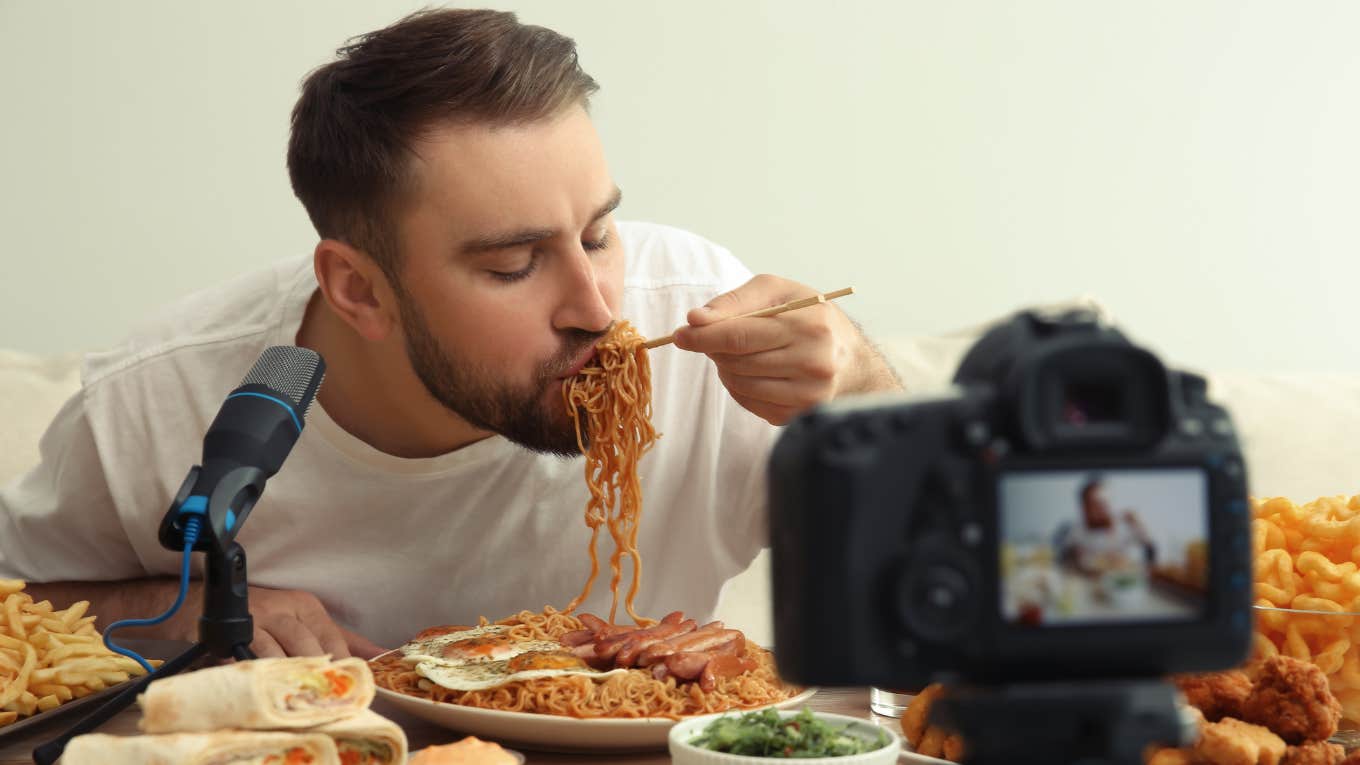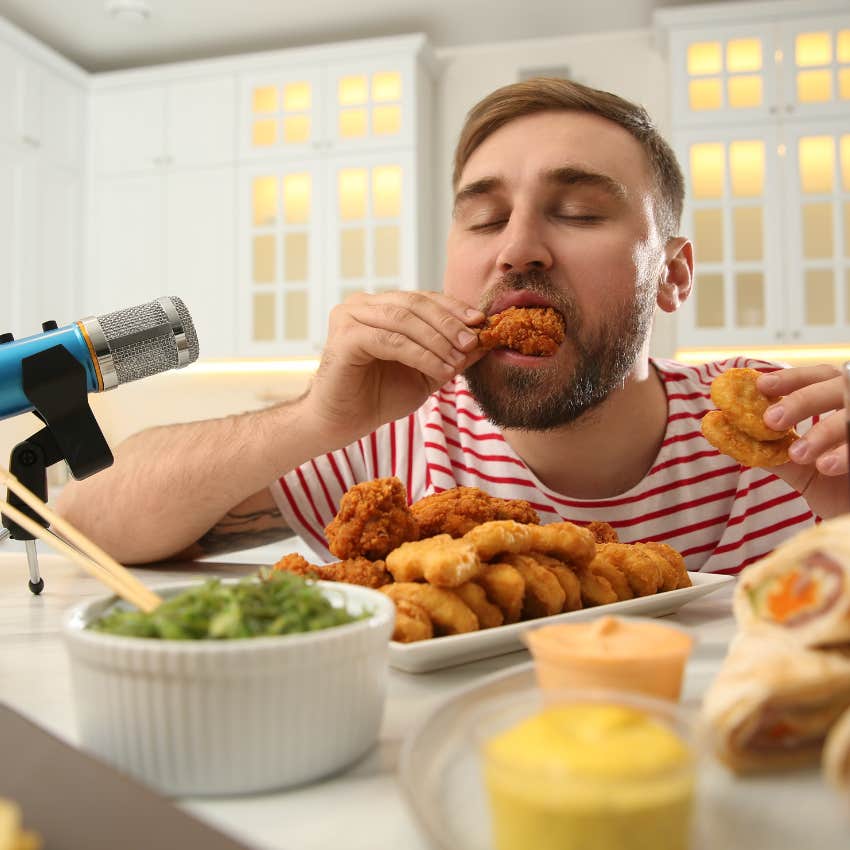Man Says ‘Gluttony’ Is The New Food Trend — ‘It’s Like The Opposite Of The Hunger Games'
Equally dystopian and addicting, this new food trend is incredibly popular.
 New Africa / Shutterstock.com
New Africa / Shutterstock.com From competitive eater videos to fast-eating food challenges, food content is only growing online. Food influencers have surpassed celebrity chefs in popularity, and the trend is only growing.
“Prove me wrong,” creator @faditbvfvci on TikTok said, “but why is gluttony the new pandemic in 2024? If I go to Chipotle and get a regular burrito now, it feels like I’m doing something wrong.”
With “secret menu” tips for popular restaurant chains and food challenges like “How Many Ramen Packs Can I Eat In One Sitting?” overindulgence is all the rage even though food insecurity has reached a staggering level in the U.S.
One TikTok user shared his theory that ‘gluttony’ is the most outrageous new social media food trend — ‘It’s like the opposite of the Hunger Games.’
“Why does it feel like I need to order some sort of concoction, get Doritos from 7/11 beforehand, or order some kind of secret menu [expletive] in order to feel something?”
While this creator simply pointed out the ridiculousness of many food trends online, he unveiled a much larger discussion about the popularity of these videos. Many mukbang creators and food influencers are making thousands, sometimes even $10,000, a month from their videos — but who is watching them?
For many people, watching people consume food that they wouldn’t be able to afford — or maybe wouldn’t eat because of struggles with food — can fill a void that increases the addictiveness of their content.
On a surface level, these food trends and videos seem harmless. What’s more neutral and uncontroversial than eating? We all have to do it. Yet, just under the surface, there’s an unsettling (and gluttonous, according to this creator) undertone that becomes impossible to ignore.
Many speculate about why food creators have become increasingly popular on social media, but it’s dystopian to say the least.
This creator equates the larger sphere of food consumption videos to a dystopian reality opposite “The Hunger Games.”
 New Africa / Shutterstock.com
New Africa / Shutterstock.com
Instead of being mindful of their food consumption and realistic with their intake, he suggested this trend promotes immoderation in a way that’s unhealthy.
Despite his opinion, there are alarming ways these videos actually align with the dystopian world of “The Hunger Games” — a reality where some people have nothing and others are overconsuming and flaunting their excess to the world.
Whether it’s subconscious or not, the “taunting” nature of food challenges and competitive eating is vastly different than the reality of families struggling to put food on the table. It’s unsettling and disturbing — yet we can’t peel our eyes away from “crunching ASMR” and overfilled burrito bowls.
With growing food insecurity and rising grocery prices, watching overindulgence satisfies the senses.
Almost 50 million people in the United States struggle with food insecurity. So, while fast food mukbangs and luxurious dinner meals might be dystopian, many people consume them to fill that void.
Many people speculate that these food influencers actually “spit out” or waste their food in between editing takes or videos. So, not only are they promoting a hoax of overindulgence, they’re wasting large amounts of food for profit.
While there’s both positive and negative effects to food content viewership, many frequent watchers are both lonely and isolated — looking for a communal eating atmosphere or fulfilling some innate craving they can’t/won’t physically satisfy.
For some, it’s purely entertainment. But it’s impossible to ignore the greater issues of ignorance that stem from this online industry of food trends and its unsettling irony within our current reality.
Zayda Slabbekoorn is a News & Entertainment Writer at YourTango who focuses on health & wellness, social policy, and human interest stories.

